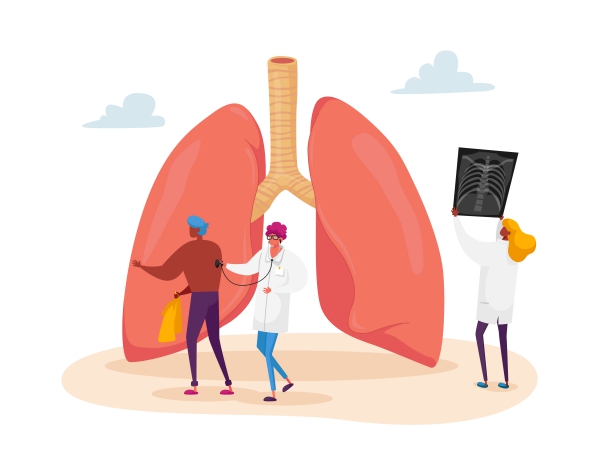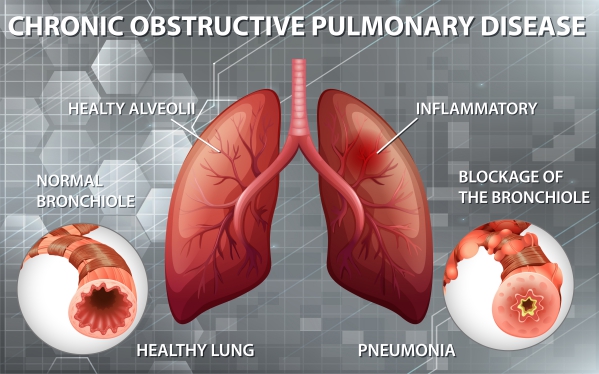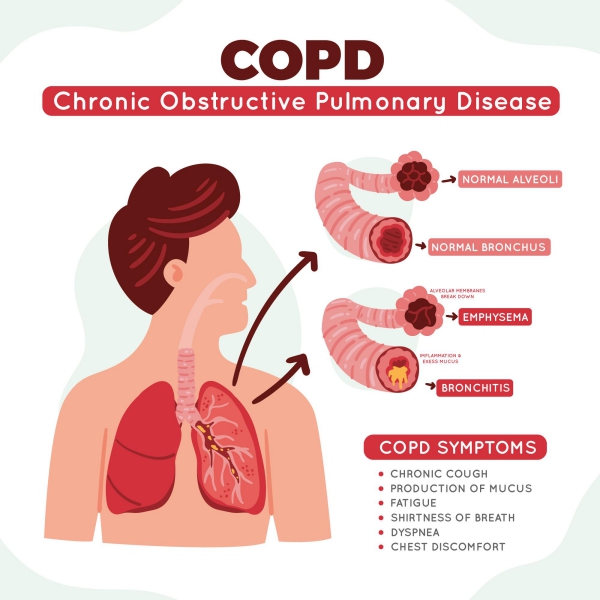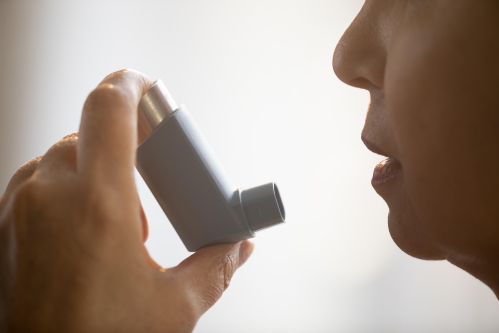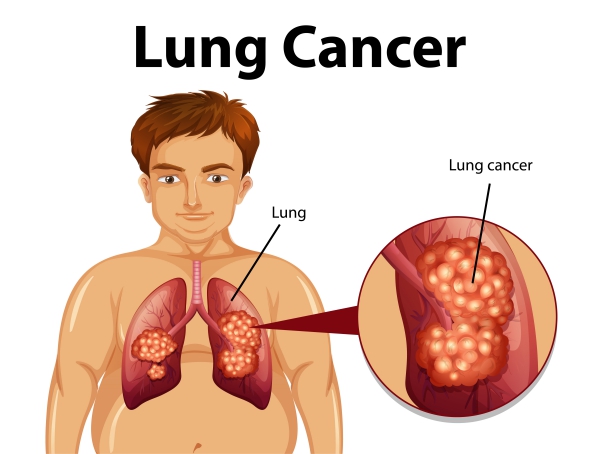Chronic obstructive pulmonary disease, Lungs, Cough, Pulmonary disease, Bronchitis, Emphysema, Smoking
Description : COPD is a lung disorders that result in inflammation and obstruction of the airways found in your
Article Details :
What is COPD?
Chronic obstructive pulmonary disease, or COPD, is a term used to group some lung disorders that result in inflammation and obstruction of the airways found in your lungs. This will then result in difficulty in breathing. The two most common disorders are chronic bronchitis and emphysema. Despite being two different conditions, they can both occur simultaneously.
Emphysema occurs when the wall of your air sacs (alveoli) found at the end of your airways are damaged resulting in the merging of different air sacs into a giant one. This impairs absorption of oxygen and you will end up with little oxygen in your circulating blood. On the other hand chronic bronchitis involves the inflammation and narrowing of your airways in addition to the loss of hair like structures (cilia) in your windpipes. The function of cilia is to sweep up the accumulation of mucus and clear out the airways. Eventually, the loss of this important structure will result in mucus build up and chronic cough in an attempt to remove the obstructing mucus plug.
Despite being a chronic condition, and having no cure up to date, treatments are available to reduce the symptoms and decrease the probability of developing complications.
What are the causes of COPD?
The most common cause of COPD is the exposure to irritants such as tobacco smoking. A long exposure to chemical irritants can also lead to COPD. These irritants include exposure to fumes from burning fuel and or some other kinds of air pollution for a long duration.
Passive tobacco smoking, which is standing next to a person who is smoking and inhaling the second-hand smoke, can also increase your risk of having the condition. If you are a known case of COPD and are still smoking, your condition will deteriorate faster.
It is also important to note that COPD is not a contagious disease.
Who are at risk of having COPD?
You are at increased risk of having COPD is you have asthma and smoke concomitantly. In some rare cases, some patients may be having a genetic disorder called Alpha-1-antitrypsin deficiency. Alpha-1-antitrypsin is an important protein which protects your lungs. You can also be at increased risk if you are exposed to inhaled irritants at your workplace.
Signs and Symptoms of COPD
The combination of the inflamed airways and the impaired clearing of mucus results in a variety of symptoms. Initially the symptoms may not be very apparent but as the disease progresses, they become more present and impairing.
The initial symptoms include:
- Occasionally feeling out of breath mostly after physical activities
- Recurrent coughing
- The need to often clear your throat mostly as soon as you wake up in the morning
Later, the evolution of the symptoms may be as follows:
- Difficulty in breathing, which gets worse during physical activities, or during even mild activity
- Chronic cough which does not go away with or without mucus
- Squeaking sound in your chest when you breathe
- Tight feeling in the chest
- Lack of energy
- Frequently having colds or flu (recurrent infections)
- Swelling in your lower extremities
- Unexplained weight loss
More severe presentations include:
- Having blue fingernails or lips resulting from very low levels of oxygen in your circulating blood
- Having difficulty to breathe even while talking
- Feelings of confusion or about to faint
- Feeling that your heart is beating really fast
If you notice any of the above symptoms, you are advised to seek medical help as soon as possible.
Making a diagnosis
To come up with a diagnosis, your doctor will first start by taking a detailed history, focusing on your exposure to irritants, and performing a physical examination. You will then be required to undergo certain tests to further confirm the diagnosis of COPD. It is important for you to explain clearly what your symptoms are and the progression of the condition.
Your doctor will examine your respiratory system with a stethoscope to listen for any abnormal sounds. Some further tests may include:
- Chest X-ray or CT scan: These tests will enable detailed visualisation of your lungs and other important structures. They are also helpful to rule out other conditions that can give you similar symptoms.
- Spirometry: This is also known as lung function tests. It is used to calculate the amount of air that you are able to inhale and exhale. It also indicates how well your lungs are functioning with respect to oxygen delivery. The test is performed by blowing into a tube connected to a small monitor.
- Arterial blood gas: This is a more accurate test to show how well your lungs is distributing oxygen in your body.
Treatment of COPD
After taking a proper history and examination, your doctor will use all the information to stage the severity of your disease according to the GOLD criteria. This staging will guide in choosing the most appropriate treatment for you. There is no cure for COPD. However, proper Read more

